It is often the case that once our homeschooled children reach their teens, nature study is pushed aside. Perhaps we think that because our children are now in high school, learning should be more textbook based. But the opposite is true!
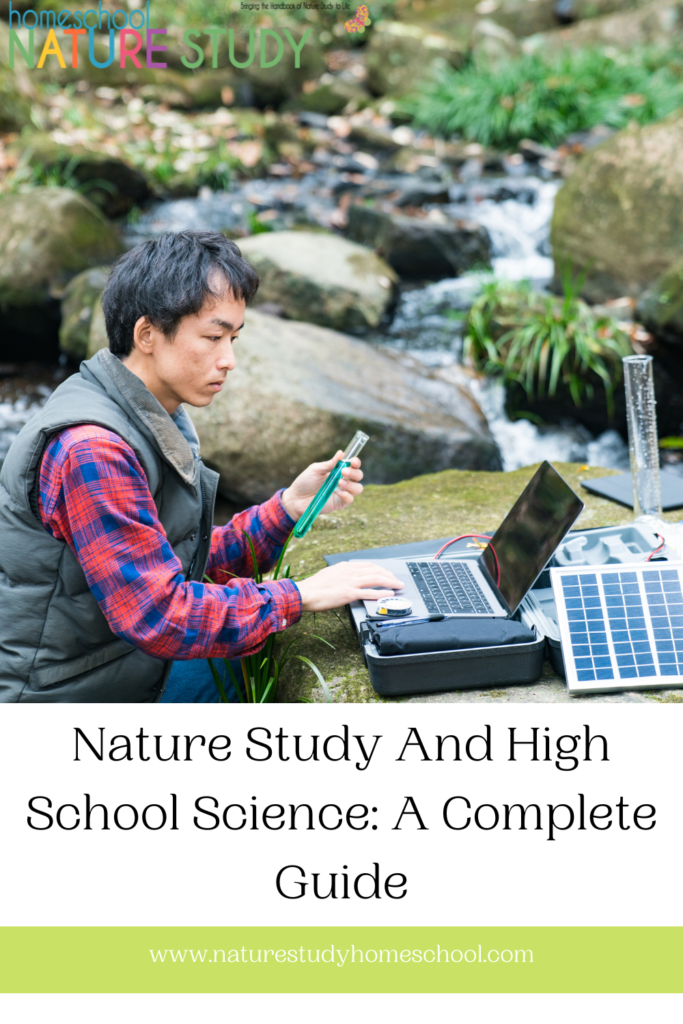
Don’t believe me?
This article has quotes from the Royal Geographical Society on the importance of field work in higher learning – that goes way above high school learning!
In fact, there are academic journals and papers written about the importance of learning in the field. You can see for yourself right here.
Highs School Science Doesn’t Have To Be All Textbooks
Here’s a thought for you.
If hands-on, experiential learning is no longer appropriate for our teens, then why are there lab work classes in high school?
Why do natural scientists and great wildlife film makers, and academic researches still head out into the field to observe nature?
Why do environmental and marine scientists still gather specimens, conduct experiments or spend months at a time out in nature studying the behaviour of all manner of animals?
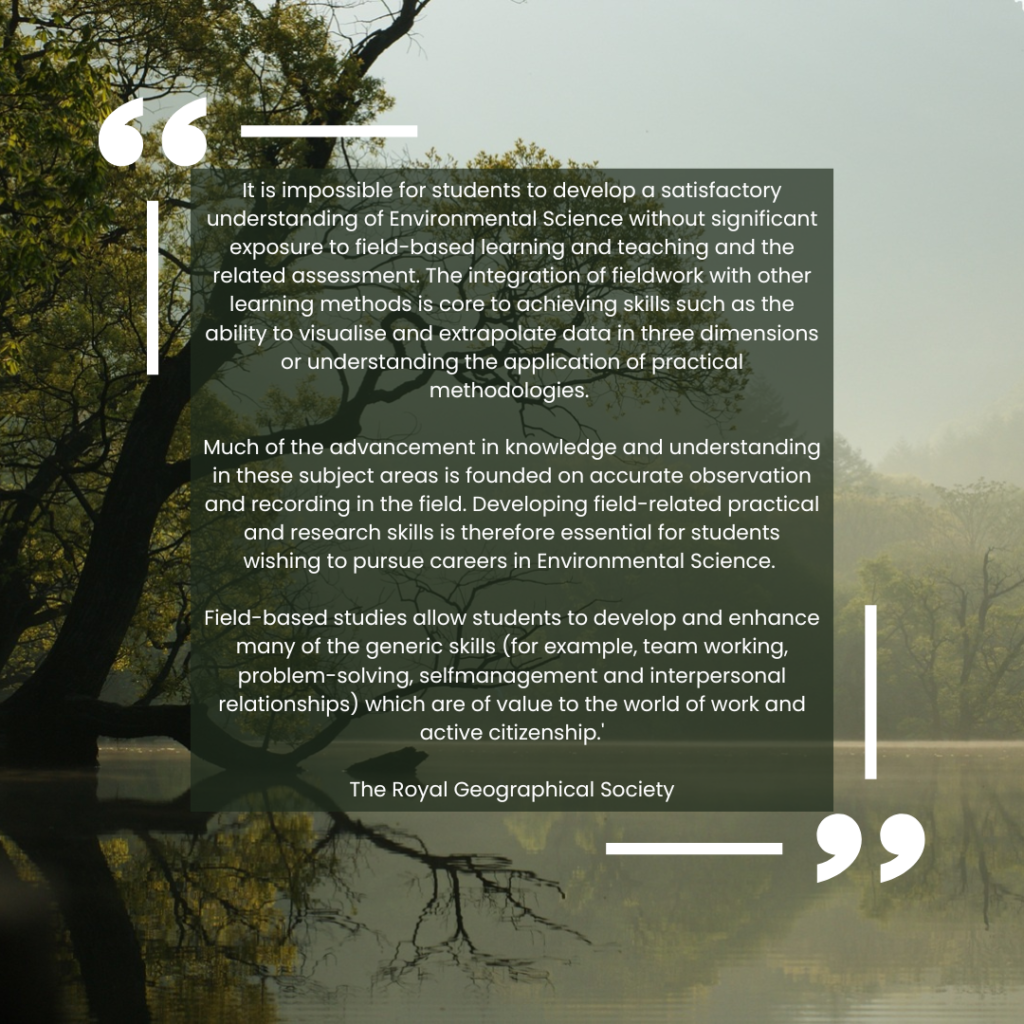
The problem is not the continuation of nature studies in your homeschool. The problem is the manner in which it is presented.
Learning directly from nature and the environment is a primary source of learning. It’s observational, it’s experiential, it’s how esteemed naturalists and scientists still discover and learn.
Are you convinced yet?
The good news for you, for your children, and your homeschools is that:
You do not have to stop nature study lessons and your outdoor hour time just because you have hit high school! You just need to change the delivery.
On the contrary, please continue to spend this precious time learning outdoors because it is valuable and it is deemed necessary by many learned academics and naturalists.
Nature study in high school is one of the most perfect ‘labs’ available for experiencing and understanding high school science concepts so I urge to to dive deeper into your nature studies rather than dropping them out of your homeschools.
Studies Show Hands-on, Experiential Learning is More Effective
Many years ago, J. Dewey (1938) recognised the close connection between learning and experience. The question of how to efficiently bridge the gap is still occupying the attention of educational psychologists and researchers. (Kolb, 1984: Experiential Learning: Experience as the source of learning an development; Reigeluth & Carr-Chellman, 2009: Instructional-design theories and models: Building a common knowledge base – vol iii; and J.Roberts, 2018: The possibilities and limitations of experiential learning research in higher education).
I am currently finishing off my Masters degree in Pro Bono legal work – and it is entirely examined on reflections of hands-on legal work undertaken in law clinics.
Lawyers, medical professionals and many others have the textbooks but they also spend a great portion of their education getting hands-on experience and putting their head knowledge into practice. They move from the abstract to the concrete by actually DOING.
If educational psychologists and researchers recognise the value and spend hundreds of thousands of hours researching the importance of experiential learning – we really have every reason to keep up our hands-on nature studies throughout the high school years in our homeschools don’t you think?
Incorporating Nature Study Into High School Science
Okay, so we have now established that we have every reason (backed by those far more cerebral people) to continue our nature studies in our homeschools as we move into the high school years.
But HOW do we go from our carefree romps in nature to being a bit more purposful about it all?
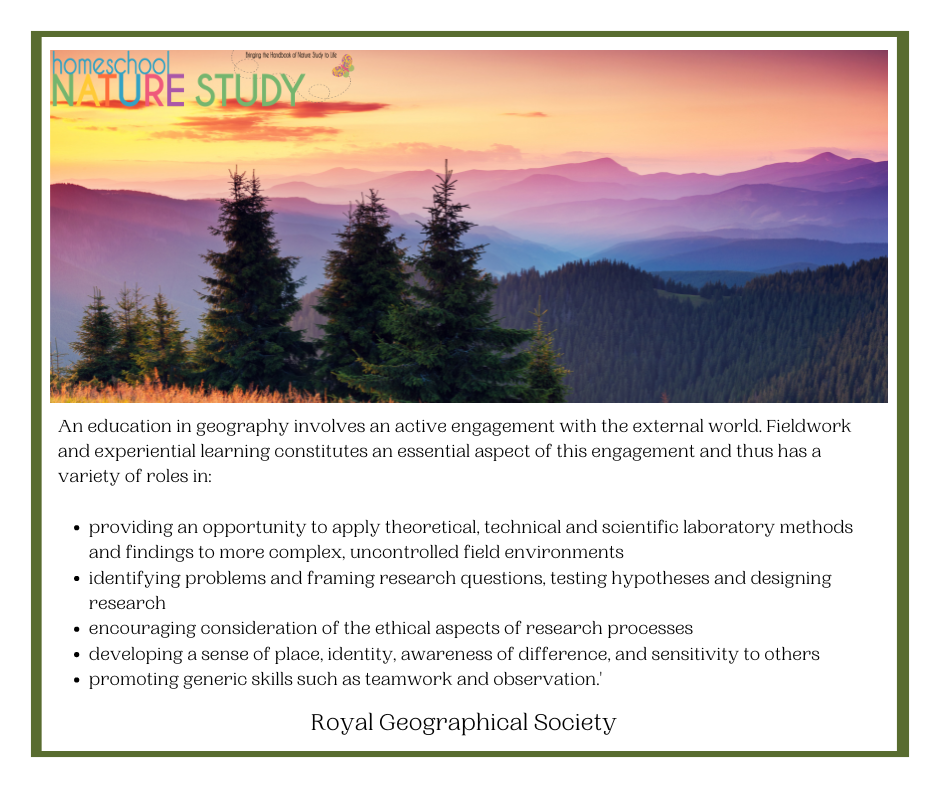
Teenagers need to have a different sort of follow-up to their nature observations, something a bit more than just their nature journals – although don’t give this up!
They need to be more connected to their nature study by finding patterns and relationships between past experiences and new ones. Take what they already know and build on it with new observations so as to develop a real interest in knowing more.
Key: Teens need to find the answers to their own questions and then express those answers in a way that makes sense to them.
There are three steps to nature study success with teens. You should aim for these in your nature studies
- Observation – encourage them to really see what they are looking at with direct and accurate observation.
- Reasoning – understand why the thing is so and what it means.
- Expression – their observations and reasonings should pique an interest in knowing more about the object.
Here is a real-life illustration of nature study with teens from Barb, the founder of Outdoor Hour Challenges:
My two boys and I regularly made visits to my dad’s pond together. When younger, they would go right to the business of scooping up water and critters and talking in excited voices about what they were finding. But once they reached the teen years, I noticed a different atmosphere, an attitude of “we’ve been here and done that”. I tried to remind myself that this was their normal teenage reaction to just about everything. They rarely appeared to be too excited on the outside. More often than not, they would later on relate the whole experience in a more favorable light to their dad or one of their siblings. Apparently, the outside of a teenager doesn’t accurately reflect the inside at all times.
So if you have older children and they appear to not be interested at first, don’t give up. It may be that they just aren’t showing it outwardly but inside the experiences are deeply affecting them. Don’t give up on the habit of nature study with your teens.
Barb McCoy – Founder of the Outdoor Hour Challenge
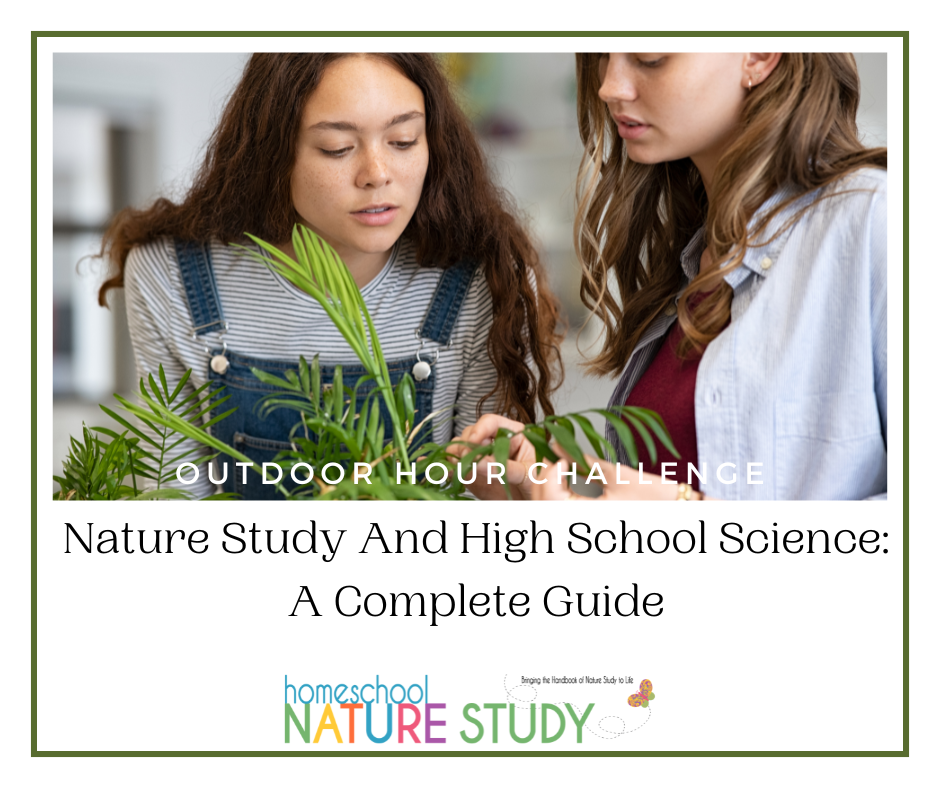
Enhancing a Nature Walk with Teens
Digital Photography: A love of the natural world does not come automatically for all children and sometimes we need to find a way to hook them into getting outdoors. Most of our children have a lot of screen time each week. Rarely are they without a device that has a camera function. Take advantage of this tool in enhancing your time outdoors!
Although there are advantages to taking a walk “unplugged”, there are distinct benefits to allowing your teens to take photos as part of their nature study time.
- It slows them down.
- Helps them focus and really see an object.
- Everyday things in their own backyard can now be captured and viewed.
- They can see the beauty.
- They make their own connections.
- Perfect for our teens…they are comfortable with the technology and love to share with their friends.
Nature Study and Studying Biology
Tricia, owner and editor of Homeschool Nature Study has given us a wonderful example of how her family’s Apologia biology studies complimented their homeschool nature studies.
Her family’s experience beautifully illustrates, in a very practical way, how you could approach high school biology in your homeschool. She has shared a full account in both these posts:
- How Summer Nature Study Complements High School Biology
- How Nature Study Enriches High School Biology In Your Homeschool
But to briefly summarize, you could take one of two approaches to homeschool nature study with high school biology. I must just say at this point that this same approach can be used with any of the Apologia science textbooks – or whatever textbook you use in your homeschool.
- You can choose to start with the Homeschool Nature Study challenges and supplement them with a text; or
- You can start with the text and supplement it with nature study.
Now, here is the hands-on exciting bit for your planning dear homeschool mama!
Go over to Tricia’s post How Nature Study Enriches High School Biology In Your Homeschool. You will see that she has matched up the Outdoor Hour Challenges with the textbooks chapters.
Not only that but she has added in supplementary books and biographies for you to use!
If you are using Apologia Biology in your homeschool this year, you now have a wonderful lesson plan for the entire course which includes the nature study challenges that you have loved and used in your homeschools!

More Resources for Nature Study In Your Homeschool
We are fortunate here at Homeschool Nature Study to have homeschool moms who have successfully traveled the high school homeschool road through all subjects including science and nature. All of these families have continued to use nature study and field work as a useful tool alongside their textbooks in their homeschools.
We have collated some high school specific nature and science posts and resources from the archives of all out websites (Curriculum Choice, Homeschool Nature Study and Your Best Homeschool). We pray that these will be a blessing to you and an encouragment to keep up your nature studies in the changing face of your homeschools.
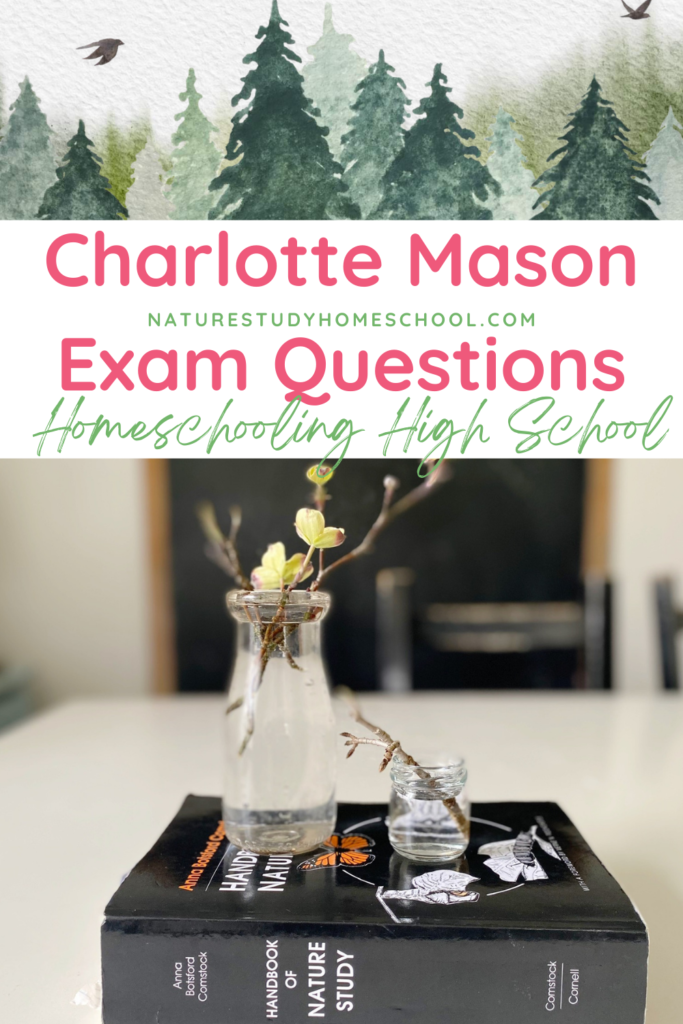
From the Archives
- Homeschool High School Nature Study Ideas
- High School Nature Study and Digital Photography: Would Anna Comstock Approve?
- Rock Cycle Activities For Middle And High School HOmeschool Nature Study
- Homeschool Ocean Nature Study and Marine Biology Resources
- Science Roots: Vocabulary for High School Biology – The Curriculum Choice
- Using Home Science Tools In Your Homeschool – The Curriculum Choice
- 30 Awesome Human Anatomy Resources for Homeschool Science – The Curriculum Choice
Apolgia Biology Curriculum Reviews
- Apologia Biology Science SuperSet Review by Tricia
- High School Biology For Your Homeschool With Apologia Science by Daniele
The Big Question:
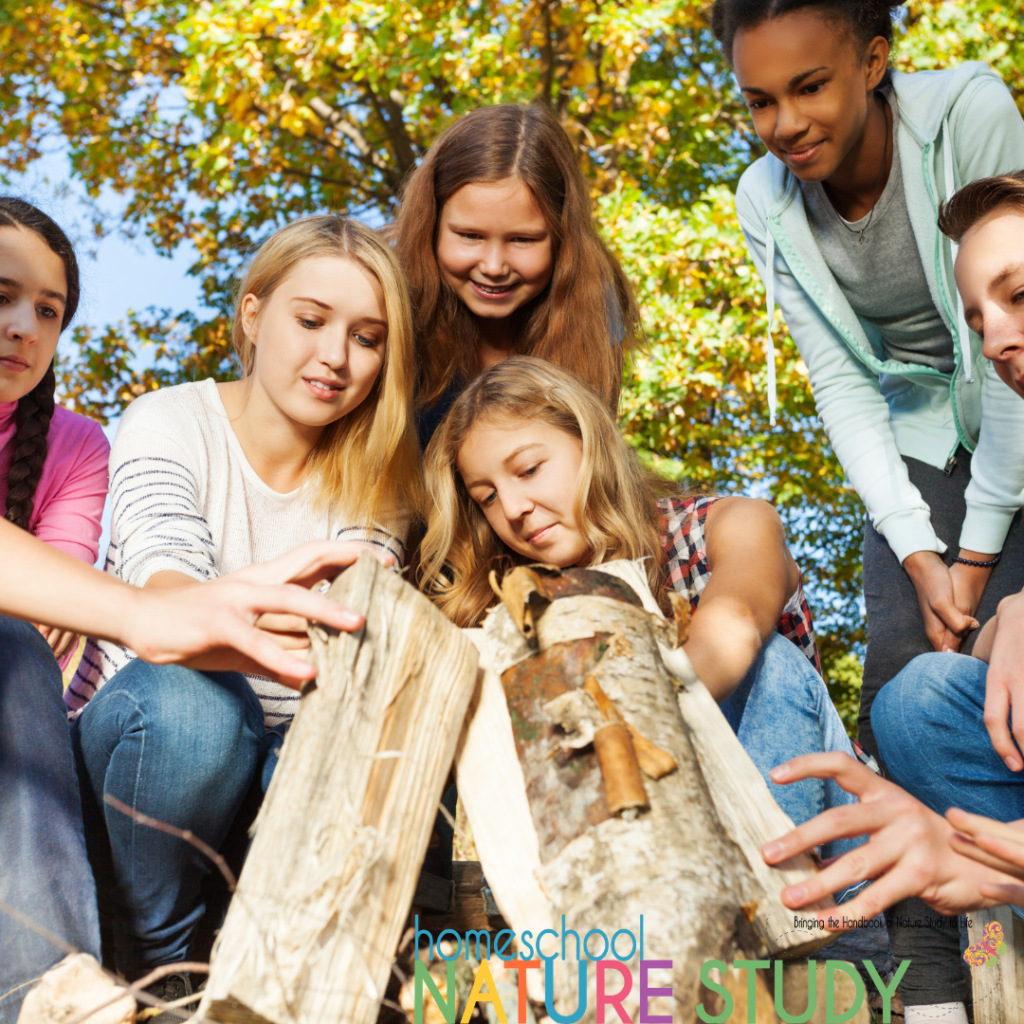
We pray that this article gives those of you who are moving into your high school years the courage to stick with nature studies in your homeschool and to continue to experience the joy and blessing of hands-on, experiential learning.
The Outdoor Hour Challenges Bring The Handbook of Nature Study to Life in Your Homeschool!
For even more homeschool nature study ideas for all seasons, join us in Homeschool Nature Study membership! You’ll receive new ideas each and every week that require little or no prep – all bringing the Handbook of Nature Study to life in your homeschool!
Be inspired. Be encouraged. Get outdoors!

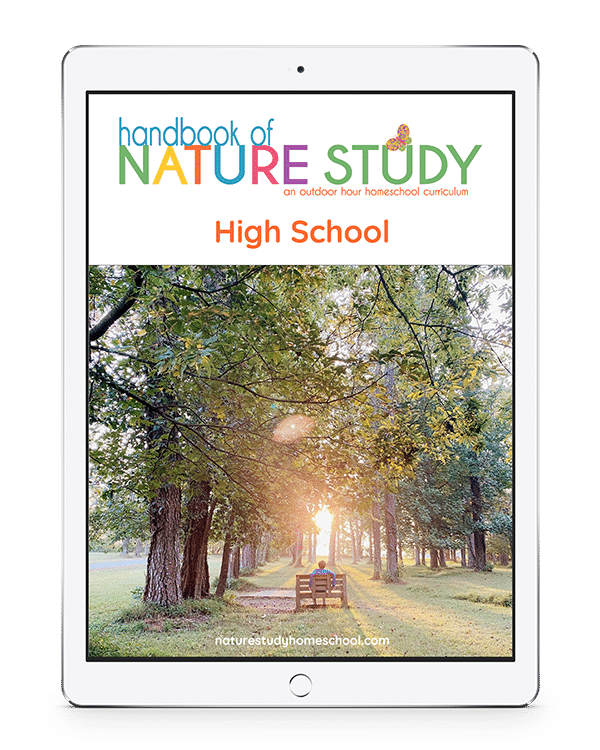
[…] Nature Study and High School Science: A Complete Guide […]